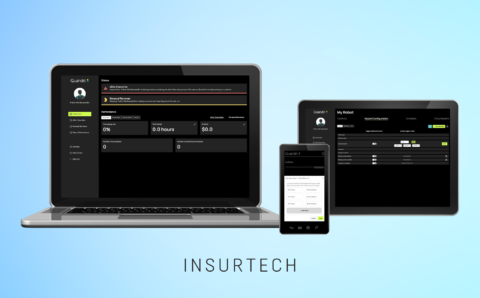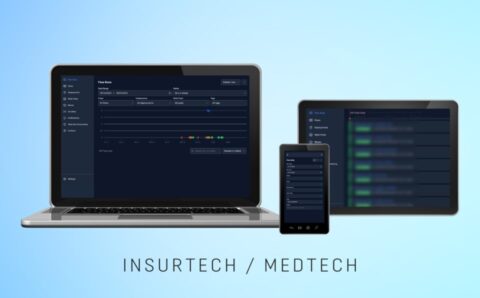
Robotic Process Automation (RPA) is a reliable and powerful technology that redefines the way businesses delegate and optimize day-to-day tasks and enhance operational efficiency. Software bots imitate human performance and interact with digital systems, making RPA comprise a broad spectrum of values and opportunities. According to Gartner, the core benefits of using RPA are reduced errors (73%), increased employee productivity (60%), reduced costs (58%), reduced project timelines (29%), and increased employee satisfaction (27%).
Nevertheless, with its rapid adoption and the need to take maximum advantage, organizations should know how to handle the RPA challenges and risks that require attention and strategic mitigation. To overcome these obstacles effectively, you should be familiar with the strategies for successful RPA implementation and realizing its full potential.
Let’s explore the core RPA risks and challenges to be aware of, employing this technology to drive innovation, productivity, and competitive advantage in today’s dynamic market landscape.
Table of Contents:
Complexity of Processes
One of the primary Robotic Process Automation challenges is the complexity of the processes themselves. While RPA introduces the highest degree of automation within repetitive tasks, not all processes are created equal in terms of suitability for automation. Still, when employed correctly, RPA can enhance efficiency by about 86%, as Deloitte states.
Identifying and assessing complex processes suitable for automation
The initial challenge lies in precisely determining which processes within a business process are perfect candidates for automation. ”The first rule of any technology used in a business is that automation applied to an efficient operation will magnify the efficiency. The second is that automation applied to an inefficient operation will magnify the inefficiency.” —Bill Gates
Basically, prime options for automation are the procedures that engage high volumes of repetitive, rule-based activities. However, the challenge arises when processes surpass complexity beyond plain rule-following. Such processes require a thorough comprehension of the complexities engaged, covering dependencies, decision trees, and data variability.
Dealing with variations and exceptions in process workflows
Even within seemingly straightforward processes, variations and exceptions can become substantial challenges to automation. Flows occurring in real-world business environments often cover deviations from the standard workflow due to factors such as data anomalies, regulatory changes, or customer-specific requirements. These variations can result in software failures or errors if not taken into account within the automation design phase. You should take care of such exceptions effectively, leveraging robust error-handling mechanisms and flexible bot configurations capable of adapting to dynamic circumstances.
Strategies for simplifying and optimizing processes before automation
To mitigate the process variation and exception challenge, you should work on streamlining processes prior to the adoption of RPA solutions. This refers to optimizing workflows, eliminating redundant steps, and standardizing data formats to guarantee consistency and predictability. What’s more, leveraging data analysis tools can equip you with valuable insights into process inefficiencies and bottlenecks, facilitating targeted and respective optimizations.
In addition, organizations can explore the integration of cognitive technologies such as Machine Learning (ML) and Natural Language Processing (NLP) to enhance the capabilities of RPA software in dealing with tasks of a higher complexity. The combination of RPA with cognitive automation allows companies to automate end-to-end processes that cover decision-making and unstructured data analysis, thereby addressing a broader range of complexities.
Consequently, by identifying suitable processes, adapting to the needed variations and exceptions, and making workflows more straightforward and optimized, you’re all set to obtain the full potential of RPA to take efficiency and innovation across their operations to the next level.
Change Management Issues
Approaching an RPA services company and adopting automation into an organization’s workflow inevitably triggers significant modifications, both in processes and employee roles. Companies should essentially manage these changes effectively to reach the success of RPA initiatives. Still, thus far, two-thirds (66%) of decision-makers express satisfaction with their RPA tool(s), while only 2% report dissatisfaction.
Addressing resistance to change among employees
Resistance to change is one of the typical challenges of RPA when it comes to workplace adaptation. Employees may fear job displacement or feel apprehensive about understanding and getting acquainted with new technologies. Handling these concerns requires strategic efforts to communicate the benefits of RPA to stakeholders in your team, such as reducing frequent tasks and assisting employees to focus on higher-value work. Opportunities for involvement and input during the RPA implementation process can also help relieve resistance and facilitate a sense of ownership among employees.
Ensuring buy-in from stakeholders and leadership
Securing buy-in from key stakeholders and leadership is crucial for the fruitful adoption that’ll quickly ensure the RPA cost payback. Stakeholders may be concerned about the upfront investments, potential disruptions to existing processes, or the impact on employee morale. You may demonstrate the tangible benefits of RPA through pilot projects and case studies to help garner support and alignment with organizational objectives. Furthermore, engaging leadership early in the decision-making process and highlighting the strategic value of RPA can reinforce commitment and drive implementation efforts forward.
Implementing effective communication and training programs
According to a McKinsey report, successful organizations prioritize communication across the organization while implementing automation-related changes. Clear and transparent communication about the goals, timelines, and future outcomes of RPA software allows management expectations and mitigates uncertainty. Comprehensive training and support to employees on RPA tools and processes will get them started with the skills and confidence needed to adopt such changes. Also, you should be open to the ongoing communication and feedback mechanisms that enable continuous improvement and adaptation to dynamic needs and challenges.
Change management issues can be easily overcome by addressing resistance among employees, securing buy-in from stakeholders and leadership, and implementing robust communication and training programs. Besides, 38% of managers claim that compliance and improvement are the predominant advantages brought by RPA, with productivity and improved performance covering 27%, according to PwC insights. Therefore, you can promote a culture of innovation and flexibility within your working ecosystem, opening the opportunity for sustainable RPA adoption and long-term success.
Scalability Concerns
Scalability is a crucial consideration in RPA initiatives as organizations seek to extend automation capabilities to cover broader processes and accommodate growth. Scalability concerns should be addressed through careful planning, strategic tool selection, and robust governance structures. Deloitte claims that while 78% of businesses that have integrated RPA plan a solid increase in investment over the next three years, scaling RPA has proven to be more challenging than expected, with only 3% of organizations having successfully scaled their digital workforce.
Planning for scalability from the outset of RPA initiatives
Successful scalability starts with thoughtful planning during the initial stages of RPA implementation. You should evaluate current and future automation needs, considering factors such as process complexity, volume, and potential expansion across departments or business units. Scalability requirements should be recognized upfront so businesses can obtain RPA software that is flexible and adaptable to progressing demands, cutting down the need for costly rework or redevelopment in the future.
Selecting scalable RPA tools and platforms
The right RPA tools and platforms are essential for achieving scalability. Prioritize instruments that offer scalability features such as centralized orchestration, distributed architecture, and the ability to scale automation deployments seamlessly across environments. Additionally, don’t neglect to evaluate vendor support, the community ecosystem, and the roadmap for future enhancements. All these aspects can help ensure prosperous scalability and compatibility with changing technology trends, cutting down the RPA risks and challenges.
Establishing governance and infrastructure to support scaling efforts
Effective governance and infrastructure are fundamental to supporting scaling capacity in RPA. Governance frameworks, such as automation centers of excellence (CoE) or steering committees, can ensure oversight, standardization, and best practices guidance across automation endeavors. Moreover, as workload needs vary, scalable infrastructure is a must. You may opt for cloud-based hosting, scalable computing resources, and robust security measures, which ensure the performance, reliability, and scalability of RPA deployments.
Thus, you should begin by planning for scalability from the outset, selecting scalable RPA tools and platforms, and setting governance and infrastructure to support scaling efforts. By doing this, you can establish yourself for efficiency in scaling your RPA initiatives. Scalability should be considered a core principle that enables organizations to use RPA’s full potential, providing productivity, efficiency, and innovation across their operations.
Navigate the Challenges of RPA with Expert Developers
Learn how RPA developers can help you overcome the challenges of implementation, ensuring a successful automation journey.
Integration Difficulties
Adapting RPA with existing IT solutions and applications can present significant challenges for you, such as compatibility issues, data silos, and technical complexities. These RPA challenges demand strategic planning, collaboration, and the employment of the appropriate technologies.
Integrating RPA with existing IT systems and applications
Begin by balancing the automation processes with the existing IT environment. Organizations often operate diverse software and platforms with varying architectures, protocols, and data formats. Seamless integration requires a deepened investigation of the current tech ecosystems and business processes to identify integration points and establish communication channels between RPA bots and backend systems.
Overcoming compatibility issues and data silos
Compatibility issues and data silos can interfere with RPA integration efforts, which may potentially result in fragmented automation workflows and inefficiencies. Addressing these challenges requires accommodating differences in data structures, protocols, and interfaces across disparate systems. Data integration platforms and middleware solutions can facilitate data transmission and synchronization between RPA platforms and backend systems, providing seamless interoperability and data flow.
Leveraging APIs and middleware for seamless integration
Application Programming Interfaces (APIs) and middleware are inalienable elements that guarantee seamless integration between RPA and existing IT systems. APIs provide standardized interfaces for interacting with applications and services, facilitating data exchange and task robotization. Middleware platforms take the role of intermediaries, orchestrating communication and data transformation between RPA bots and backend systems. The usage of APIs and middleware simplifies integration complexity, accelerates deployment timelines, and enhances the scalability and interoperability of your RPA solutions.
Strategic planning, collaboration, and leveraging APIs and middleware are the techniques that can truly help organizations harness RPA’s absolute power to increase business productivity and operational efficiency, always being ready for innovations, especially when cooperating with a credible IT vendor. When partnering with PLANEKS, you are not only delivered with tailored RPA software but also have an opportunity to synchronize disparate IT systems with our outstanding custom API integration services, achieving seamless interoperability, performance accuracy, and effectiveness in turn.
Security and Compliance Risks
RPA brings efficiency, taking over the daily activities of business processes, but it also introduces security and compliance risks that organizations must address. Mitigate these risks with a comprehensive approach that implies threat mitigation, regulatory adherence, and solid security measures. The seamless and secure integration of RPA can enhance your compliance by 92%.
Mitigating security threats associated with RPA implementation
RPA implementation opens up new attack vectors and potential vulnerabilities. To eliminate security threats, you should execute thorough risk assessments, identifying potential weaknesses in RPA infrastructure, configuration, and access controls. Implementing encryption, secure communication protocols, and endpoint security measures helps safeguard sensitive data and prevent unauthorized access to RPA systems. Regular security audits, penetration testing, and vulnerability assessments are essential for proactively detecting and addressing security vulnerabilities.
Ensuring compliance with industry regulations and data privacy laws
RPA solutions must comply with industry regulations and data privacy laws governing the handling, processing, and storage of sensitive information. Businesses must assess regulatory requirements relevant to their industry and geographic location, such as GDPR, HIPAA, or PCI DSS, and implement controls to guarantee compliance. This comprises implementing data encryption, pseudonymization, and access controls to protect sensitive data, as well as setting audit trails and logging mechanisms to track and monitor RPA processes for compliance purposes.
At PLANEKS, our qualified software engineers have deep expertise in implementing high-performing and efficient RPA solutions with full compliance in industries like Healthcare, eCommerce, Fleet Management, and Hospitality.
Implementing robust security measures and access controls
Powerful security measures and access controls are the best way to protect RPA systems and eliminate insider threats. You should implement role-based access controls (RBAC) to limit access to RPA resources based on job roles and responsibilities. Multi-factor authentication (MFA) and strong password policies help prevent unauthorized access to RPA environments. Moreover, continuous monitoring and anomaly detection tools are your dedicated assistants that detect and respond to suspicious activities in real time, decreasing the impact of security incidents.
Security and compliance in RPA initiatives can minimize risks and raise your credibility with stakeholders. A guarantee of regulatory compliance backed by a solid approach to security enables you to reap the benefits of RPA while minimizing associated risks and ensuring business continuity. As the same report by Deloitte indicates, 92% of businesses claim that RPA helped them enhance compliance and 90% state that they’ve enhanced the level of quality and accuracy using automation.
Overcoming RPA Challenges: Strategies and Best Practices
RPA for small businesses and well-established organizations offers increased efficiency, allowing them to streamline operations and achieve excellent performance outputs. Still, successful RPA implementation is possible only when adhering to strategic approaches and best practices.
Establishing a clear RPA strategy and roadmap
A clear RPA strategy and roadmap are foundational to successful implementation. You should begin by defining clear objectives, aligning RPA initiatives with business goals, and developing a roadmap outlining the phased approach to automation. This implies assessing organizational readiness, identifying target processes, and setting realistic timelines and milestones. A well-defined strategy provides clarity and direction, guiding decision-making and resource allocation throughout your RPA implementation roadmap.
Engaging cross-functional teams and stakeholders early in the process
Cross-functional teams and stakeholders from the outset provide collaboration and buy-in, essential for successful RPA implementation. Businesses can reach out to representatives from IT, operations, finance, and other relevant departments to gain diverse perspectives, identify potential challenges, and ensure alignment with business priorities. Early engagement also facilitates ideas and knowledge sharing and ensures that RPA implementation addresses the needs and requirements of all stakeholders.
Prioritizing processes based on complexity, impact, and feasibility
Not all processes are suitable for automation. Organizations should prioritize processes based on criteria such as complexity, impact on business outcomes, and feasibility of automation. This way, businesses can focus resources on high-impact processes with the potential for significant Return on Investment (ROI). By starting with plainer, well-defined processes and gradually scaling automation efforts to more complex tasks, you can mitigate RPA risks and challenges, demonstrating tangible benefits early in the whole roadmap. In addition, you can recoup costs within less than 12 months, with robots ensuring an average of 20% of full-time equivalent (FTE) capacity according to Deloitte
Investing in employee training and change management initiatives
Employee training and change management are integral components of successful RPA adoption. In-depth training programs equip employees with the skills and knowledge needed to work alongside RPA tools effectively. Change management activities help eliminate reluctance to adopt the new technology and promote employee engagement throughout the RPA implementation process. Employees who are engaged in the automation journey and can provide ongoing support and communication are the basic requirements to ensure a smooth transition and maximize the value of RPA investments.
Leveraging RPA vendors and partners for expertise and support
RPA vendors and partners offer valuable expertise, resources, and support to organizations engaged in automation initiatives. A trustworthy provider’s expertise is especially vital during the planning, implementation, and optimization phases, accelerating time-to-value and minimizing implementation risks. That’s why you should partner with experienced RPA providers, having access to specialized skills, best practices, and industry insights, enhancing the success and sustainability of RPA deployments.
Transform Your Business with RPA
Contact us today and let our experts guide you through a seamless RPA implementation process.
Continuously monitoring and evaluating RPA performance and outcomes
Continuous monitoring and evaluation are essential for optimizing RPA performance and ensuring alignment with business objectives. You should establish key performance indicators (KPIs) to measure the effectiveness, efficiency, and impact of RPA initiatives. Regular performance reviews and feedback loops enable businesses to identify opportunities for improvement, handle any issues faster, and adapt automation strategies to changing business needs.
Case Studies and Success Stories
RPA has showcased its powerful potential across various industries, such as Banking, Healthcare, and even Insurance Brokerage, illustrated by the success story of Quandri‘s Robot Factory. This case study showcases real-world instances of organizations overcoming RPA challenges and provides valuable insights and practical knowledge obtained from successful implementation.
Quandri
Quandri’s Robot Factory addresses the specific challenges faced by insurance brokerages by streamlining and simplifying the complex process of robot creation and management. By automating manual processes such as Policy Renewal, eDoc management, Policy matching, and verification, Robot Factory helps insurance professionals operate more efficiently. The product facilitates efficient configuration automation, cutting down the time and effort required for bot setup while ensuring high customizability to meet the individual operational requirements of each brokerage. Real-time control over the automation process allows brokers to make immediate adjustments, monitor performance, and respond to changing business needs.
Lessons learned and key takeaways from successful RPA implementations
The success of Quandri’s Robot Factory illustrates the importance of strategic planning, stakeholder engagement, process prioritization, employee empowerment, vendor collaboration, and performance monitoring in overcoming RPA challenges and achieving sustainable success.
Establishing a clear RPA strategy and roadmap
Quandri’s prosperity highlights the significance of establishing a clear strategy and roadmap for RPA implementation. Organizations can navigate complexities and achieve desired outcomes by defining objectives, prioritizing processes, and aligning efforts with correctly set business objectives.
Engaging cross-functional teams and stakeholders early in the process
Quandri engaged in collaboration and buy-in across departments. Involving representatives from IT, operations, and finance enabled Quandri to gain diverse perspectives, identify potential challenges, and ensure alignment with business priorities, laying the foundation for successful implementation.
Prioritizing processes based on complexity, impact, and feasibility
Quandri prioritized processes based on complexity, impact, and feasibility, focusing resources on high-impact areas with significant ROI potential. Businesses can mitigate risks and demonstrate tangible benefits early for broader adoption by starting with simpler processes and consistently scaling automation efforts.
Investing in employee training and change management initiatives
Quandri invested in comprehensive training programs and support, helping teams adopt the technology and adapt to new ways of working without the risks of RPA. Ongoing assistance, especially in the early adoption stages, communication, and feedback mechanisms ensure a culture of innovation, drive employee engagement and ensure a smooth transition throughout the implementation process.
Leveraging RPA vendors and partners for expertise and support
Quandri leveraged the expertise of PLANEKS to accelerate RPA implementation, delegating it to the hands of professionals and mitigating implementation risks to implement all benefits of RPA in Insurance. Collaborating with experienced IT providers enables organizations to make use of specialized skills, best practices, and industry insights, enhancing the success and sustainability of RPA deployments.
Continuously monitoring and evaluating RPA performance and outcomes
With Quandri, businesses can continuously monitor and evaluate RPA performance and outcomes, enabling data-driven decision-making and optimizations. Setting key performance indicators (KPIs), conducting regular performance reviews, and soliciting feedback facilitate continuous improvement, ensuring alignment with business objectives and maximizing the value of RPA investments.

Robot Factory
Robot Factory enhances insurance brokerage operations with automation, providing tools for efficient document handling and improved productivity.

AI Platform
With our AI-Assisted platform, healthcare institutions automate essential tasks, leading to enhanced efficiency & better patient services.

Santé.app
Santé.app offers a fast, user-friendly way to choose health insurance, leveraging surveys to sort & compare options tailored to individual needs.
Conclusion
Now, you’re aware of the key challenges and risks of Robotic Process Automation, such as process complexity, change management challenges, scalability concerns, integration issues, and security and compliance risks.
All the illustrated challenges can be addressed effectively. To do so, you should adopt proactive planning and strategic approaches that will improve RPA integration and your team’s efficiency. The Grand View Research claims that the global robotic process automation market size was estimated at $2,942.7 million in 2023 and is forecasted to rise at a compound annual growth rate (CAGR) of 39.9% from 2023 to 2030. Furthermore, 53% of companies have already begun their RPA adoption roadmap, and their number is projected to rise to 72% within the next two years. If this trend remains, RPA has every chance to achieve almost universal adoption within the next five years. The technology is truly promising and holds immense potential for the future, so in case you want to gain competitiveness and boost your business, now it’s the perfect time to adopt it.
Regardless of the RPA risks, you primarily adopt a transformative technology that offers immense opportunities to skyrocket your operations, take efficiency to the next level, and become a highly competitive market player. Contact PLANEKS representatives – we’ll become your dedicated technical vendor, helping you overcome all the mentioned challenges strategically, providing your business with the full potential of RPA to achieve sustainable prosperity and solid performance in the current market conditions.

